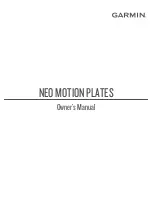
3
1. IMPORTANT SAFETY INSTRUCTIONS
Failure to obey all of the warnings and instructions contained in this manual may result in serious injury, or
permanent damage to your bike.
Always wear a properly fitted and fastened helmet when riding. This is required by law in most
states and is an important safely precaution. Failure to wear an approved safely helmet can result in
severe injury or death.
Check your helmet for proper fit and damage before each ride.
Always obey all traffic laws.
The purchaser, owner, and/or riders of this cargo bike are directly responsible for knowing and
obeying all local, state and federal laws regarding the riding and use of this cargo bike
Always ride cautiously, maintaining complete control and a reasonable speed (
<
20km/h).
The rider should hold the handlebars and stop before get on or off
Sitting securely when riding.
Slow down the speed to 10km/h or less before turning the corner, in order to avoid rolling over
This bike is not suitable for stunt riding, jumping, competition, or racing.
Always check that brakes and throttle are functioning properly before each ride.
Only one rider at a time.
Carrying more than 4 objects in the basket may interfere with your control of the cargo bike, and can
result in loss of control.
Do not ride at night or in conditions when visibility is impaired, unless you install head lamps and tail
lamps that make you visible to all pedestrians and vehicles.
Wet weather significantly detracts from brake performance. Always allow a longer distance for
safely stopping in the rain, or on a wet or icy road surface.
This product should not be used by minors without adult supervision.
Do not modify the bike
Do not tow or pull with the cargo bike. Do not allow the cargo bike to be towed or pulled.
Keep fingers away from moving parts and chain.
Always park in right place.
Avoid high speed sharp turns, as your cargo bike may tip over.
Make sure that there is an enough braking distance when with cargo.
Must use rear brake every time when braking.
Some localities require that the owner or rider equip their bike with a horn, bell, or other sound
making device to use for warning others of your approach.
Check handlebar and seat adjustments before riding.
Check all axle, motor mounting, and drive system mounting nuts.
Check your tires for cuts, exposed casing, casing cords, and proper inflation before each ride.
This bike is not recommended for competition, stunt, any aggressive or off-road riding.
Ensure you wear safe footwear and keep loose articles of clothing clear of moving parts on your E-
Bike while riding.




































